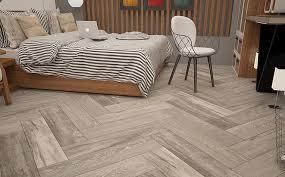
Everybody loves the sleek, swanky appearance of new floor tiles. Along with their attractive appearance, they are sturdy and ideal for spaces that receive a lot of dampness. However, if not cleaned correctly, grit may scrape the surface and cause irreversible damage. Dirt accumulation over time may also cause discoloration and make the whole area seem dirty.
With this in mind, we’ve compiled a list of cleaning recommendations to keep your tiles appearing spotless. Continue reading to discover how to clean floor tiles like a master, regardless of whether they are ceramic, porcelain, or stone.
How often should a floor tiles be cleaned
At the very least, floor tiles should be cleaned or vacuumed twice a week. This is to remove any gritty residue that may dull the floor tiles and prevent them from gleaming. Mop the kitchen floor tiles every two weeks and the bathroom floor tiles once a week, or about every two months.
The most effective method for cleaning floor tiles without using chemicals
If you have children or anybody who is especially sensitive to harsh chemicals in your household, you may opt to clean your floor tiles using a DIY solution. The best non-chemical approach to clean floor tiles is to mix water, baking soda, and white wine vinegar. Spray the solution over the tiles and let it sit for a few moments before mopping.
Vinegar is an excellent cleaner for laminate, ceramic, and porcelain tile. A word of caution: Always dilute the vinegar with water and thoroughly rinse to prevent the acid from eroding the finish on your floor tiles. Vinegar should not be used on stone floor tiles, since it will dull their surfaces.
To clean floor tiles, you’ll need the following:
- Industrial chemical-resistant cleaning gloves
- An old toothbrush (or homemade vinegar and baking soda mixture)
- A specialized floor tiles cleaner (or homemade vinegar and baking soda mixture)
- Microfiber cloth or duster Numerous paper towels
- Dustpan and brush or vacuum cleaner
- Rag or chamois mop with cloth-headed head and bucket
What is the proper way to clean porcelain and ceramic floor tiles?
1. The most frequent kind of tile floor is ceramic or porcelain, which is also the simplest to clean. Sweep or vacuum the floor prior to cleaning the tiles to eliminate any remaining dust or grime. To effortlessly clean up any remaining dust or annoying hairs, use a microfiber cloth or duster.
2. In a bucket, combine the floor tile cleanser or DIY solution with warm water.

3. Squeeze any extra water from the cloth or mop by dipping it into the solution. A chamois mop is preferable to a sponge mop for floor tiles. Wipe the floor with long, soft strokes, beginning at one end of the room and working your way toward the entrance.
4. Empty and refill the bucket often to prevent leaving unclean watermarks.
5. Relax and put your feet up while the cleaner does its magic. When the floor is nearly dry, use a paper towel to absorb any remaining moisture and buff the tiles with a dry microfiber cloth.
What is the best way to clean stone floor tiles?
The procedure for cleaning the slate, granite, and marble floor tiles is very identical to that for ceramic and porcelain tiles, with the following exceptions:
- Avoid abrasive cleansers and acidic things such as lemon juice or vinegar, since they might cause the surface to deteriorate. Additionally, ammonia-based cleansers should be avoided.
- When sweeping or cleaning your stone tile floor, use soft products. Scratching the stone using rough objects such as scrub pads and scrapers is possible.
- Scrub your stone tile floor gently, since they scratch more readily than ceramic or porcelain floor tiles.
- Use the correct sort of cleaning for your floor to avoid ruining the finish; for example, granite tiles need a pH-neutral cleaner to prevent discoloration.
How to clean floor tile grout
Cleaning the grout is just as important as cleaning the rest of the floor, since regardless of how shining your floor tiles are, moldy or discolored grout may detract from the overall appearance.
Avoid Cracks
Larger tiles are more prone to cracking than smaller tiles. With a little preparation throughout the installation process, you may help prevent cracks from forming and save money on future repairs. Between the substrate and the floor tiles, a crack isolation membrane is added.
This membrane acts as a buffer between the floor tiles and the subfloor, preventing the natural expansion and contraction of the floor tiles throughout the hot and cold months from immediately resulting in a crack. This membrane will not always protect the floor tiles from fractures caused by anything being dropped on it.
Differences between Floor and Wall Installations
As is the case with every floor tiles installation, there are distinct differences between floor and wall installations. It’s usually prudent to delegate significant jobs to a specialist. If you do, having a basic understanding of these suggestions for installing large-format tiles can assist you in screening specialists and ensuring that you choose the proper ones.
Although installing these enormous tiles requires a bit more consideration, it is not necessarily more difficult than any other tiling job. Once the tiles are in place and you can see the breadth of space for the first time, you’re bound to fall in love with the completed look’s modern beauty. If the large-format floor tiles you choose are made of natural stone, they will need a final stage of sealing, particularly if the stone is light in color. Marble tiles, travertine tiles, and porcelain tiles all have their own distinct appearances.
Final thoughts
If you’re looking to clean your floor tiles without chemicals, this article will do well in providing you with some actionable tips you can harness to clean your tiles effortlessly. Most of the tips mentioned here can be carried out with simple household materials and the best part is that they work well. In this regard, feel free to go over this article to understand each tip properly and implement it accordingly.

